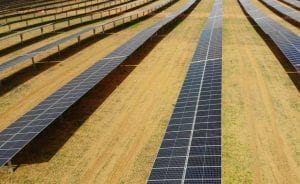New analysis shows state investments and jobs are now at risk from the cutting of the renewable energy Target.
New South Wales and Queensland have been cited has the ‘the states with the most to lose’ if the Federal Government slashes the Renewable Energy Target (RET), a recommendation put forward by Dick Warburton last week, according to the analysis released by the Clean Energy Council.
The CEC paper highlights that investment in large-scale renewable energy such as solar and wind farms would fall by 80 per cent in New South Wales if the policy was closed to new generation, one of the preferred recommendations of the Warburton review. This option would rob the state of more than $4 billion of investment.
Queensland will lose 4,600 jobs in solar and more than 6500 across its renewable energy sector, leading the nation in jobs lost.
The study follows similar estimates conducted by The Climate Institute, which noted NSW and South Australia losing out most in the large scale renewable investment, and by Frontier Economics, which also cited NSW as the biggest victim.
CEC Acting Chief Executive Kane Thornton said the RET is a big economic opportunity for the states, particularly in regional areas of the country where it was really needed.
“If the Federal Government adopts the recommendation from the Warburton review of the policy to cut the RET we will miss out on most of the $15 billion in investment in large-scale renewable energy that is expected to be created by the policy”, Thornton said.
“The New South Wales economy could be more than $5 billion better off in 2020 if the RET is left to work as it is supposed to, but 80 per cent of this will be lost if the RET is cut.”
“Victoria stands to gain almost $4 billion of investment from renewable energy such as wind and solar farms by the end of the decade if the policy is left alone. If it is slashed then 75 per cent of this will go begging, and the state’s 3700 existing jobs will be put at risk.”
The Clean Energy Council briefing paper, the impact of cutting the Renewable Energy Target on state jobs and investment, shows that many parts of the country have a lot to gain from the policy.
Approximately 21,000 people are directly employed by the renewable energy sector across the country, and many thousands more are employed as a result of the flow-on benefits from building, installing, operating and maintaining the sector.
“The RET review panel’s own analysis showed there is no benefit to consumers from slashing the Renewable Energy Target. We should leave it alone to get on with creating jobs and investment across the country”, Thornton said.









